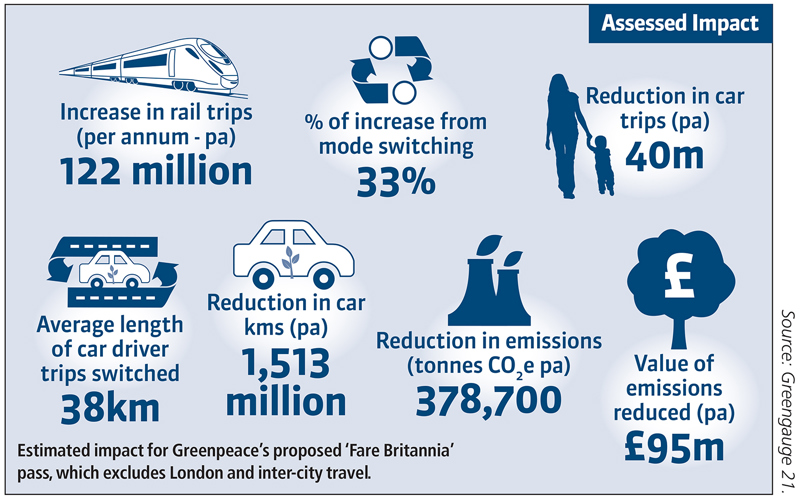Our cover of just two issues ago led on train operating companies’ further moves into open access, and how it could offer them a new life after nationalisation. The cover image showed the Prime Minister and his new Transport Secretary at Hitachi’s Newton Aycliffe facility, where they talked up the government’s role in the latest rolling stock orders - for open access services.
This growth in private service plans is against a backdrop of renationalisation - not necessarily a contradiction in itself, as you can have both. But Peter Plisner looks at how the government has been backing the growing plans for open access, and to what extent that could lead to a potential clash between public and private approaches to rail.
Our cover of just two issues ago led on train operating companies’ further moves into open access, and how it could offer them a new life after nationalisation. The cover image showed the Prime Minister and his new Transport Secretary at Hitachi’s Newton Aycliffe facility, where they talked up the government’s role in the latest rolling stock orders - for open access services.
This growth in private service plans is against a backdrop of renationalisation - not necessarily a contradiction in itself, as you can have both. But Peter Plisner looks at how the government has been backing the growing plans for open access, and to what extent that could lead to a potential clash between public and private approaches to rail.
While those open access plans were moving forward, Transport Secretary Heidi Alexander was writing to the Office of Rail and Road (ORR) about open access, concerned about their impact on the network. The public appearance and the unprompted letter seem to provide mixed messages.
Our regular columnist Christian Wolmar explores this apparent contradiction and mentions that one of the innovative advantages of open access competition highlighted by ORR was in ticketing.
These were welcome, helping to bring down the high cost of rail travel for some during the privatised era. But in the era of nationalisation, they could be a complication in the government’s stated ambition for a simpler, consistent and logical fares structure - even if they do help with affordability.
This issue’s fares focus looks at several ways that could help to deliver simpler fares and more affordable travel.
We look at the results of ScotRail’s bold experiment on abolishing peak-time travel fares. It helped to make travel for some more affordable, and it took some car journeys off the roads - but was it enough to justify the expense? Conrad Landin weighs its successes against its cost.
Another, more radical way to affordable fares and simpler ticketing is an ‘all you can eat’ pass - go anywhere, anytime, on anything. Subscription pricing is an increasingly popular business or consumption model across the economy, whether for digital services such as music streaming or software, or for ‘real’ things such as gym use or a car, so it’s worth considering in a rail context, too.
A pass that covers multiple rail networks, metro travel and perhaps more would be simple for customers to purchase and use. It’s clear, easy to understand, and means you don’t have to worry about being fined for having the wrong ticket.
But it’s far from simple to deliver, requiring close co-operation between different local government organisations with different properties and circumstances, as well as different transport bodies in very different financial positions.
The best-known European example is in Germany, but introducing the Deutschlandticket wasn’t all plain sailing. Subscription tickets work better for some operators and regions than others.
We look at the experiences of Germany, Austria and others. In some countries, the schemes have become part of measures to meet environmental targets, and Ben Jones looks at how much they have shifted travel from road to rail. What might the pattern be in the UK?
Greenpeace believes it would reduce congestion in our cities, but it’s also pragmatic about the possibility of starting smaller.
Its idea for a ‘Fare Britannia’ pass would exclude the most profitable inter-city and Greater London routes, for starters. Around a quarter of journeys in London are already made on public transport, compared with single-figure percentages in other cities, so outside London may be best to target for gains.
Is a subscription model pass realistic for the UK? The signs of the times in terms of budget squeezes and economic difficulties would indicate that now is definitely not the time to be hoping for subsidies to back such a scheme with the aim of more affordable travel - although ultimately that’s a decision that society and government could make.
However, Ben Jones looks at what other countries have done: what has worked, what hasn’t, the impact, and whether it will last. He finds that there’s more to these schemes than cheaper fares.
That seems sensible to me. In inner London, it’s always been so easy to hop on a bus when emerging from the Tube. You have the means to pay in your hand already, and if it’s a travelcard it may even be effectively free.
I miss that when I arrive in other countries’ capitals, without their Oyster or travelcard equivalent. Do I have the means to pay? How much? Can I even buy a ticket onboard? Or do I hop in a taxi?
What size of modal shift would our rail networks be able to handle? Labour’s prospectus looked towards Switzerland for a more integrated system with more seamless transport connections that would make the most of a national ticket.
An overall guiding mind might help, but more investment and integration all seem a long way off. That’s not to say, though, that a national subscription card shouldn’t be part of the bigger vision and strategy for rail - in some form or another.

Login to continue reading
Or register with RAIL to keep up-to-date with the latest news, insight and opinion.



















Login to comment
Comments
No comments have been made yet.